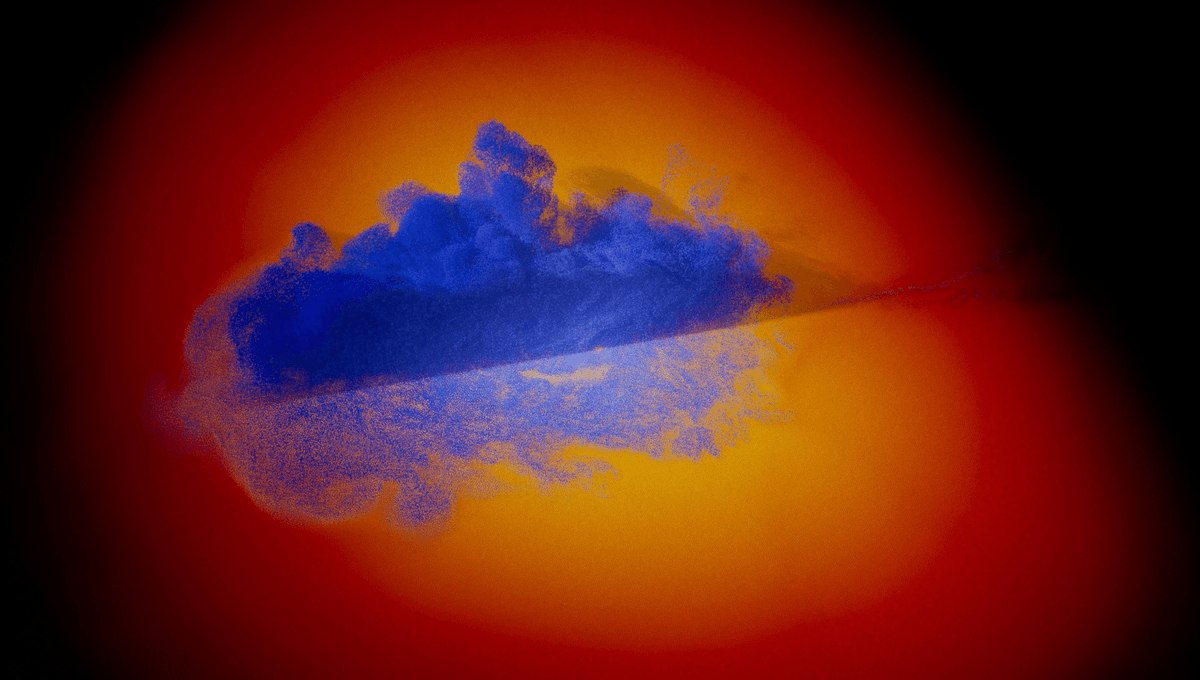
Modeling of the consequences of a giant body smashing into Jupiter has undermined one of the main theories used to explain the strange nature of its solid core. Not everyone is satisfied with the alternatives, however, so the quest to make sense of the innards of the king of planets will go on.
Although most of Jupiter’s volume is gas, data from the Juno mission indicate it does contain a solid core. Juno also revealed the core is nowhere near as dense as previously expected. Instead, it’s larger, but “dilute”, despite the immense pressure exerted by so much atmosphere pressing down under the planet’s epic gravity. Moreover, it seems there is no sharp boundary between the solid core and the compressed gases around it; instead, a gradual transition zone exists.
Such a strange core requires some explanation, and the most widely discussed involves an enormous impact. However, a new study indicates this doesn’t solve the problems of trying to explain why the core isn’t more like a large version of one of the rocky planets.
When we say the proposed impact was enormous, we mean it. This event would have made the collision that created the Moon look like a couple of dodgem cars. The authors of one study came to the conclusion that half of the core’s heavy elements were delivered through the arrival of a planet with 10 times Earth’s mass when Jupiter was almost fully formed.
Easy as it is to believe that something this strange must have been caused by a truly exceptional event, an attempt to simulate the impact by Dr Thomas Sandnes of Durham University and colleagues came up empty-handed. Using a supercomputer to model the way the collision would shatter the impactor and cause fragments to settle, the team were able to reproduce a dilute core, no matter how they tweaked the size, composition, or incident angle.
As the video below shows, the pieces of rock and ice from both core and impactor resettle, and a boundary between solid rock and layers of compressed hydrogen and helium reestablishes itself.
“We see in our simulations that this kind of impact literally shakes the planet to its core – just not in the right way to explain the interior of Jupiter that we see today,” Sandnes said in a statement.
A further problem with the impact hypothesis is that Jupiter does not appear to possess the only dilute core in the Solar System. “The fact that Saturn also has a dilute core strengthens the idea that these structures are not the result of rare, extremely high-energy impacts but instead form gradually during the long process of planetary growth and evolution,” study author Dr Luis Teodoro of the University of Oslo said.
None of this means there were no major collisions during Jupiter’s formation. It is still generally accepted that Jupiter formed by smaller objects gradually accumulating, rather than a gas cloud collapsing. Study author Dr Jacob Kegerreis of Imperial College London said, “Giant impacts are a key part of many planets’ histories, but they can’t explain everything!”
What, then, does explain Juno’s evidence for a dilute core that transitions gradually? That question remains unanswered, with models including a dilute core before the capture of most of Jupiter’s gas, and convective processes that slowly turn a differentiated core into a dilute one. The authors of this paper do not indicate how likely they consider these options.
Either way, the authors think dilute cores might be the norm for larger gas giants. We could make a start on discovering whether smaller gas planets have them as well if we had a mission to Uranus or Neptune, but the odds on either are not looking good.
The study is published in the Monthly Notices of the Royal Astronomical Society .
Source Link: Jupiter's Mysterious Core: Science's Best Explanation For How It Formed Doesn't Work After All